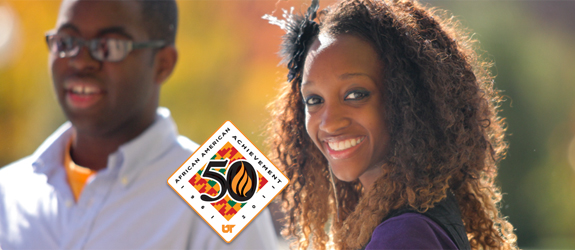
An easy way to create diversity on campus would be to admit hordes of students from all racial and socioeconomic backgrounds, award a ton of scholarships, and then, on the first day of orientation, simply post a banner stating “Enjoy the next four years!”
Of course, it’s not that simple.
“One of the things the university values is enrolling not only the most qualified, but also the most diverse student body possible,” states Vern Granger, director of undergraduate admissions and assistant dean of enrollment services.
Building a more diverse student population, however, only goes so far. The larger challenge lies in creating a campus that is welcoming to all students and provides the multitude of services that students from such varied backgrounds need in order to be successful in college.
UT’s Minority Achievement Program (MAP) is one of the university’s initiatives to ensure that minority students connect with the campus and each other. Now nearing its 25th year, MAP is a voluntary mentorship-like program that pairs incoming minority students with upperclassmen minority students; the first-year students can come to their mentors with questions, requests, problems, or any other issues they wish to discuss, and in return the mentors provide them with guidance, advice, and assistance.
“Mentors serve as support systems to help new students transition into their first year and overcome any challenges or struggles that they may face,” says Tanisha Jenkins, associate director of Minority Student Affairs.
In addition to serving as role models, mentors also help students navigate the large UT Knoxville campus to find academic and social opportunities that might be of interest, like tutorial programs or student organizations. Mentors and mentees can also participate together in a number of MAP events held each month, including success skills workshops, social activities, and community service outings.
“MAP really helps first-year students get acclimated to the campus,” Ebony Jones, a former MAP participant, says.
MAP President Jonathan Kinnard agrees, citing the close-knit atmosphere MAP can provide students who might otherwise feel lost or overwhelmed by such a large—and mostly white—student body.
“You can tell the difference with the MAP students when they’re walking on campus. They’ve created a small family for themselves among the freshmen,” Kinnard states.
Anderson Olds, an economics major, says there are plenty of tools to help all students succeed, and MAP can help students choose the services they need from the sea of programs offered on campus.
“We have the Student Success Center, the library, OIT, the Writing Center, and other things. These are for everyone, not just one group,” Olds says.
Providing friendly faces and guidance for minority students helps those students feel more at home on campus and makes it easier for them to find assistance for academic or social challenges.
“Our overall goal of MAP is to make sure students feel comfortable here, stay here, and graduate from here. The end-all goal is the graduation of the students,” Jenkins says.
Branching Out
Jenkins, Kinnard, and Jones stress that although there are many benefits to MAP and other programs for minority students, minority students should also become actively involved with the overall campus community.
Jones, an advertising major, served on the Student Government Association’s Freshman Council her first year. She believes campus-wide groups like SGA are a good way for students to meet each other.
“I think it’s important for African American students to not just join minority organizations. The Freshman Council is a great thing because everyone is a freshman, regardless of race or economic background. You can meet other freshmen like you, and many of them become future student leaders,” Jones says. Jones has also served as chair of the Women’s Coordinating Council and has participated in the College of Communication and Information Diversity Student Leaders Society, Advertising Club, and the UT Ambassadors program. Olds is also a student leader, serving as president of the NAACP chapter at UT Knoxville.
Olds and Jones feel that UT is making progress in achieving and supporting student diversity, but there are still steps to be taken.
For his part, Olds would like to see a less racially divided Homecoming.
“It seems like you have a ‘majority’ Homecoming and a ‘minority’ Homecoming. This past year, it did kind of start coming together. We should make it one big celebration,” he says.
Jones says that she likes that UT has diversity-minded organizations like the Black Cultural Center, MAP, and the Student Leaders Society, but she wants to see more racially integrated student participation in clubs and events.
“I think the university could be more inclusive. The black cultural program has great programs for minority students to make them feel at home, but it’s always minority students in those programs, and I think having some white students there would be good,” she says. Jones also feels that more non-white faculty would be beneficial.
Jenkins remarks that the 50th anniversary of the undergraduate admission of African Americans provides the perfect occasion to assess the school’s progress and plan future efforts.
“The fact that we’re celebrating 50 years of African American achievement at UT is a huge deal,” she says. “It’s an honor to be at UT during this time and help our students as a whole see where UT has come from and how it can move forward.”
